‘Wide Brim’ is a popular variegated green and yellow variety of hosta. These plants aren’t only a beautiful addition to your plant collection; they’re also low-maintenance and easy to grow.
Wide Brim hosta is a popular medium-sized variegated hosta cultivar. As the name suggests, the dark green-blue leaves have a thick yellow outer “brim” edge. Wide brim hostas grow to be about 3-4 feet wide and 18 inches tall. The funnel-shaped lavender flowers have dark violet stripes. Growing in zones 3-9, this variety has its best color contrast when the foliage receives a bit of direct sunlight in the morning.
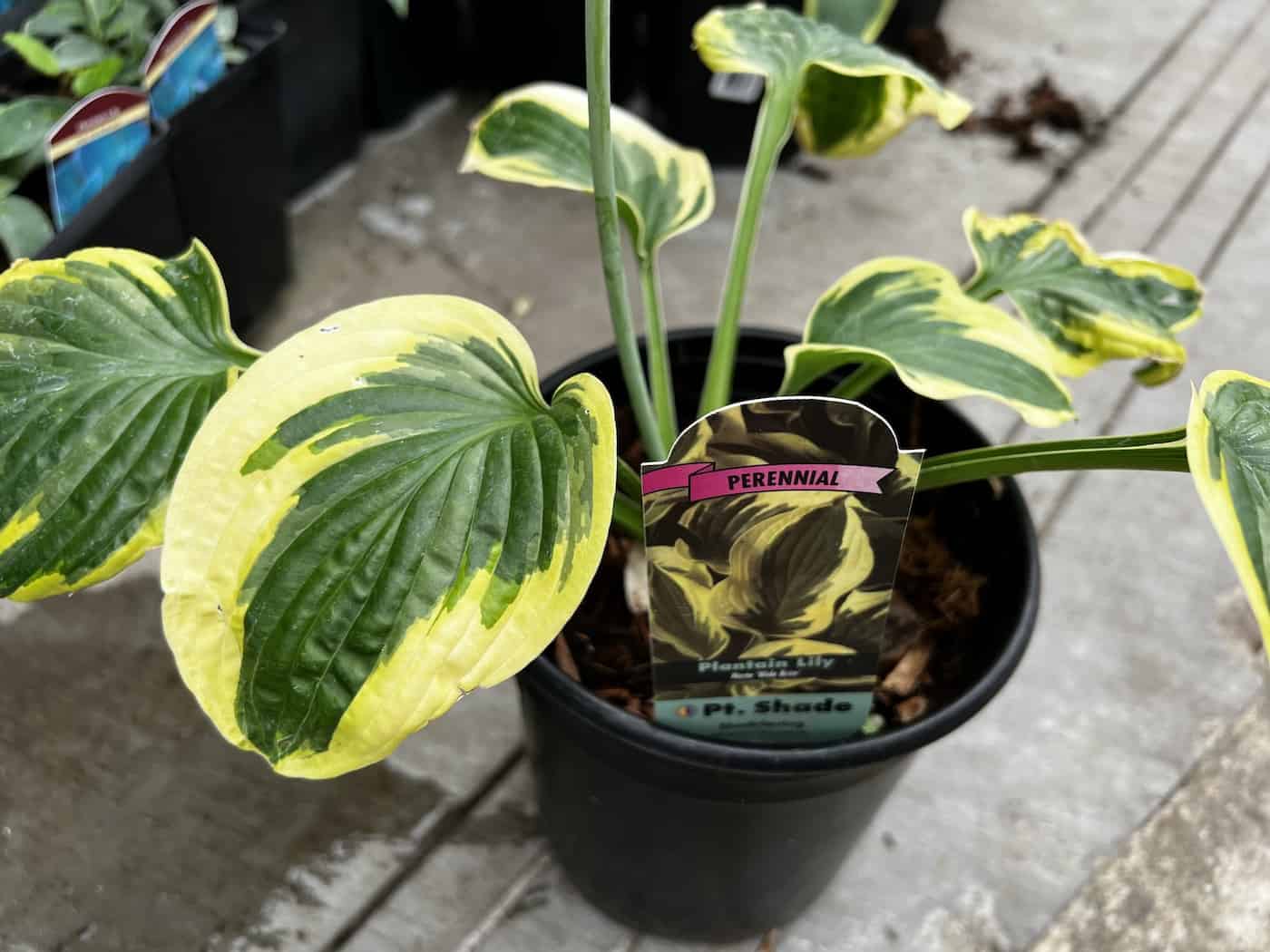
Wide Brim hosta basics
Wide Brim is a popular hosta variety that’s been a garden favorite for over 50 years. Bred from ‘Bold One’ and ‘Bold Ribbons,’ this cultivar is best known for its thick light yellow outer leaf margin. The streaked edges of the leaves unfurl and chartreuse yellow and mellow to a creamy white throughout the summer.
The ‘Wide Brim’ hosta received the RHS Award of Garden Merit in 1993. It is also commonly used by florists to create larger arrangements with a tropical vibe. This is a vigorous variety that is particularly easy to grow.
Planting a Wide Brim hosta
Planting a medium-sized hosta like Wide Brim involves several key steps. First, choose the right location. Hostas thrive in partially shaded areas, but some varieties can tolerate more sun. Ensure the site has well-draining soil to prevent root rot.
Prepare the planting area by loosening the soil to a depth of about 12 inches. Mix in compost or well-rotted manure to enrich the soil. This step is crucial for hostas, as they prefer nutrient-rich, moist soil.
When planting, dig a hole twice as wide as the hosta’s root ball and just as deep. Carefully remove the hosta from its container, being mindful not to damage the roots. Position the hosta in the hole so that the crown (where the roots meet the stem) is level with the soil surface. This positioning ensures proper growth.
Backfill the hole with the amended soil, gently firming it around the roots to eliminate air pockets. Water the hosta thoroughly after planting. This step settles the soil and provides the necessary moisture for the roots to start establishing.
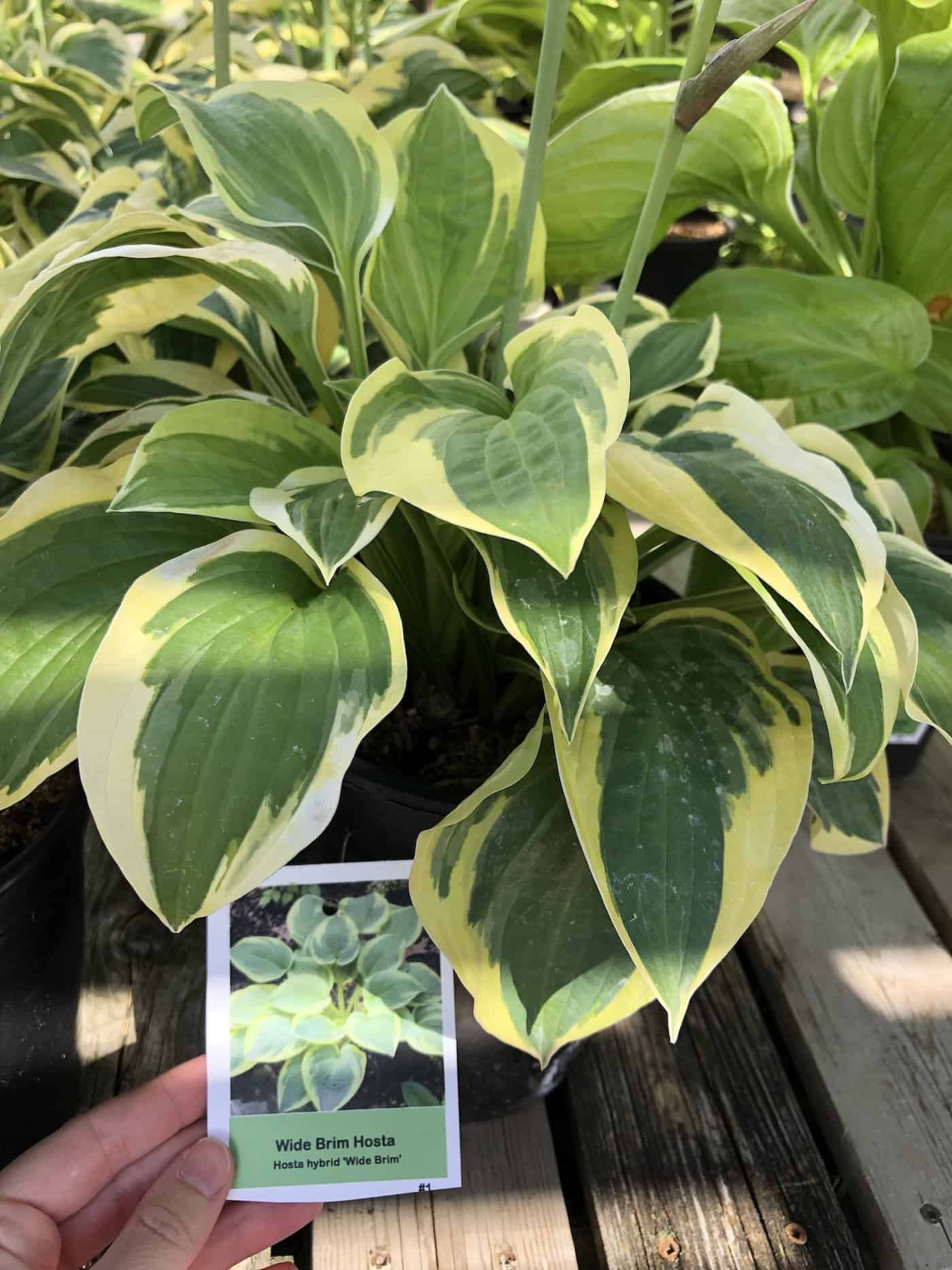
Mulching hosta plants
Mulch is a key part of successful hosta care. Mulch around the hosta with organic material like shredded bark or leaf mold. Mulching helps retain soil moisture and keeps the roots cool. Aim for a 2-3 inch layer of mulch, avoiding direct contact with the plant’s stem to prevent rot.
Watering hostas in the garden
Hostas like ‘Wide Brim’ need frequent watering both when they are first planted and during dry periods. Generally, you’ll have to water them once a week, and if the weather is too hot, you may need to increase that to two times per week.
Hostas require consistent moisture but dislike soggy conditions. Their soil should never dry out for too long, so you may want to adjust the watering schedule around that. It should stay moist all through the seasons.
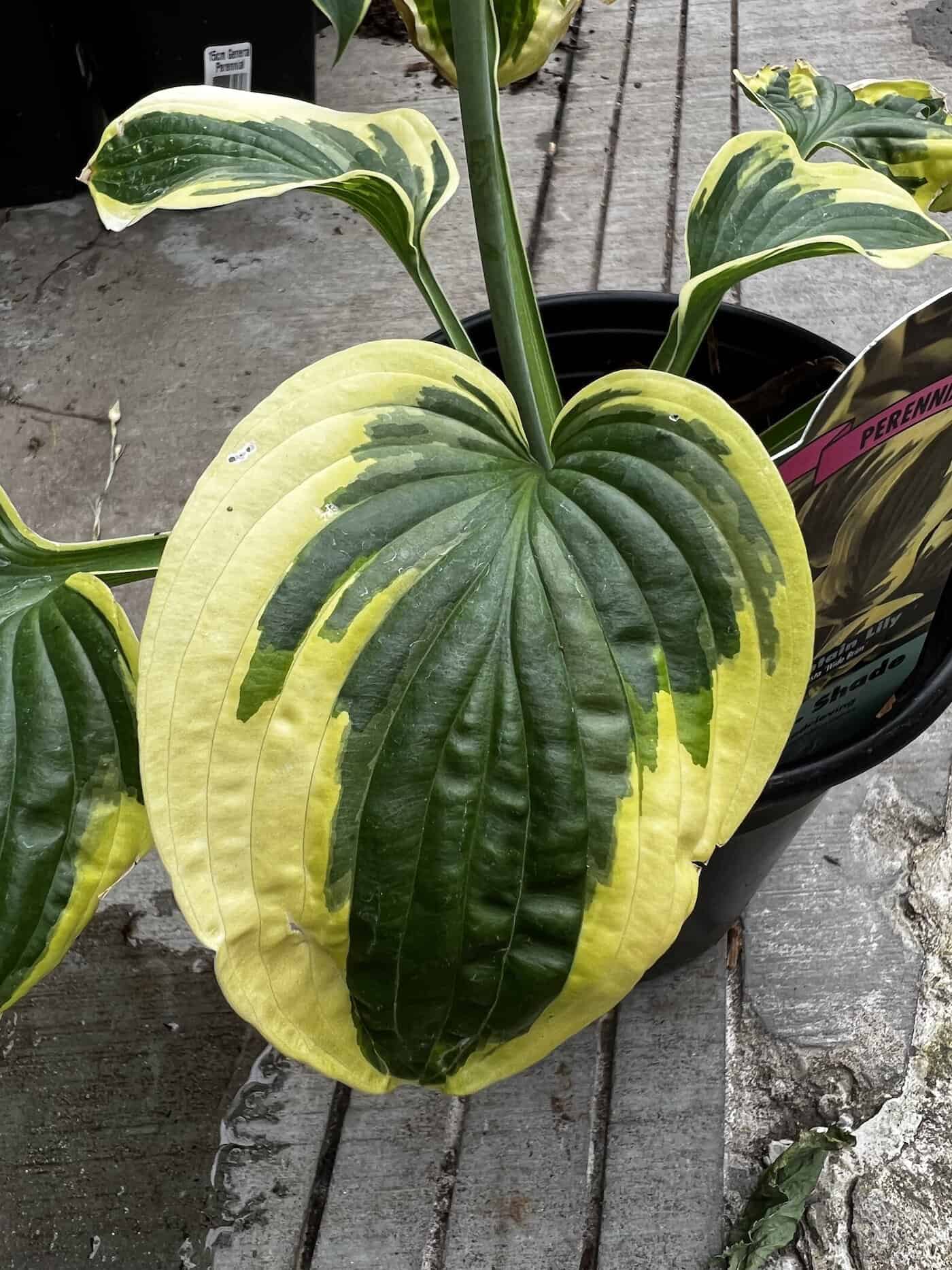
Sunlight requirements for ‘Wide Brim’
Hostas are native to the mountain forests of Japan, where they don’t get a lot of sunlight. They thrive in partial shade, and being exposed to harsh sun can actually harm them.
For the best coloration, let the plant have direct sunlight sunlight for a few hours in the early morning. Give the plant shade in the afternoon when the sun is harsh. Be sure to monitor soil moisture during hot weather and keep the soil moist if possible.
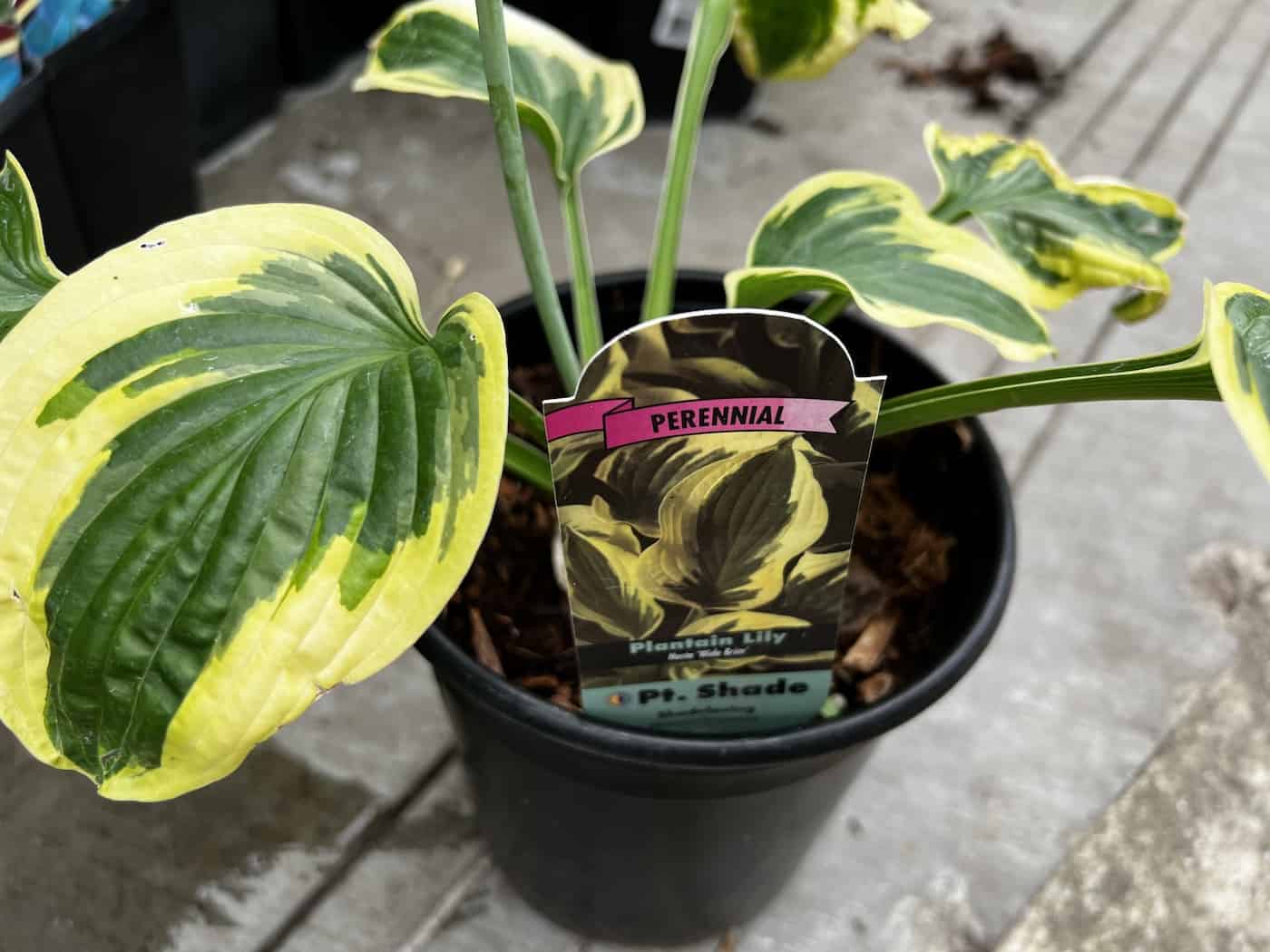
Hosta propagation
Specific cultivars like ‘Wide Brim’ are propagated by division. Here’s a brief guide to dividing hostas:
- Using a garden fork, dig up and lift the hosta, working from its center to prevent tearing the roots.
- Lift it gently, then shake it off to remove the stuck soil bits.
- Start pulling the plant apart gently; you’ll find it dividing into smaller clumps.
- If the clumps aren’t pulling apart, you can try removing them with a sharper tool, like a knife.
- Replant the clumps and give them plenty of water.
Hostas are usually divided in early spring or mid-late fall. Here are some extra tips on how to divide them well.
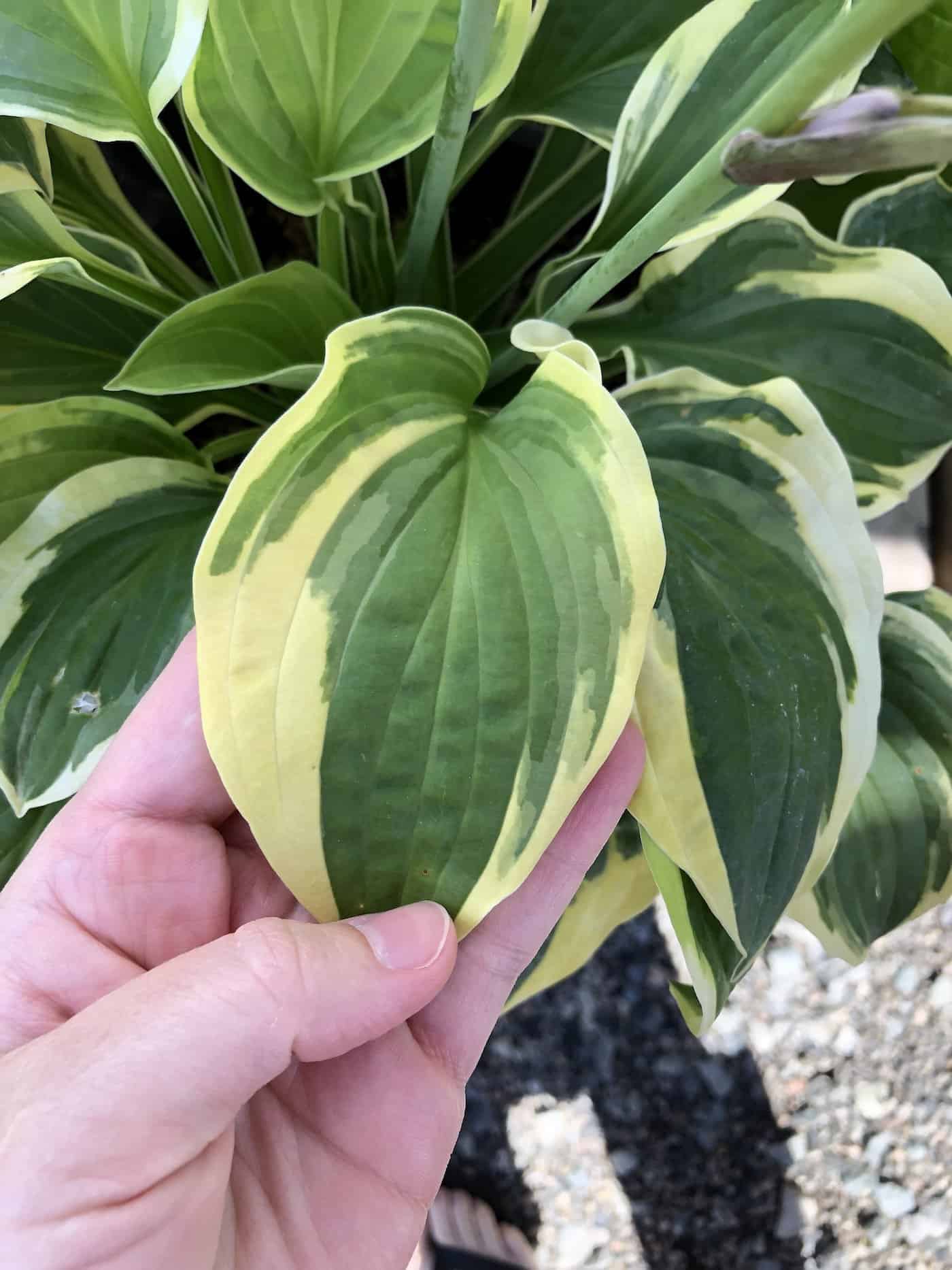
Similar cultivars
Here’s a list of hosta cultivars similar to ‘Wide Brim’:
- Hosta ‘Honeysong’: Very similar in appearance.
- Hosta ‘Mama Mia’: A little bit bigger, but otherwise similar.
- Hosta ‘Warwick Choice’: Taller, with more defined ribs on the leaves.
- Hosta ‘Summer Breeze’: Thicker yellow edges, smaller green centers.
- Hosta ‘Patriot’: Smaller, features green leaves with wide, white margins.
- Hosta ‘Fortunei Aureomarginata’: Offers green leaves edged in gold.
- Hosta ‘Francee’: Smaller, displays dark green leaves with white edges.
- Hosta ‘Minuteman’: Smaller, known for its deep green leaves and striking white margins.
- Hosta ‘Gold Standard’: Boasts a unique color change, starting with green and gold margins, then transitioning to a more solid gold hue.
- Hosta ‘Paul’s Glory’: Features a color transition from chartreuse to gold with blue-green margins.
These cultivars share traits like leaf shape, variegation patterns, or color contrast with ‘Wide Brim,’ making them visually comparable options for your garden.






